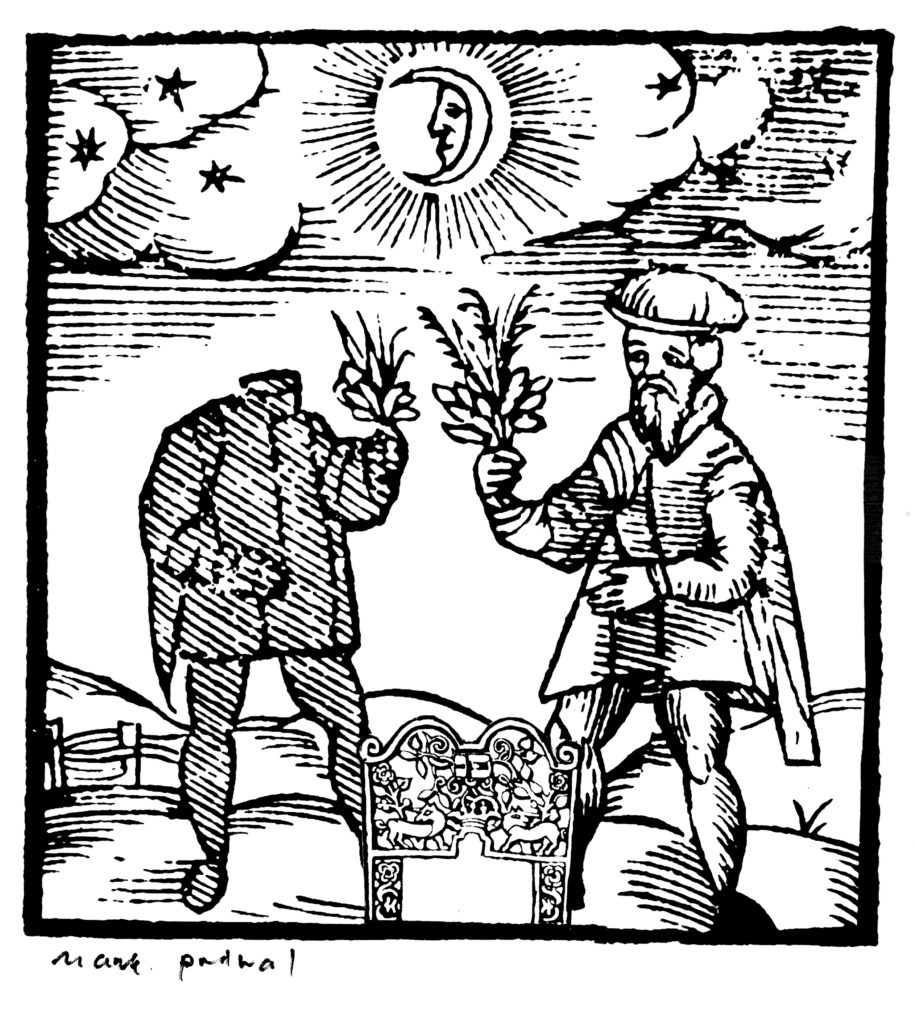Hoshana Rabbah
Mark Podwal (b. 1945)
Digitial archival pigment print on paper
7 7/16 x 7 9/16″
USA, 2020
© Mark Podwal
Hoshana Rabba is the seventh day of the festival of Sukkot, the celebration of the fall harvest. Hoshana is Hebrew for “please save (us)” and refers to a series of seven liturgical poems recited on the day. Collectively these make for a Hoshana Rabbah, a great petition for salvation. Some believe that on the night of Hoshana Rabbah a person’s fate for the year ahead, already decided by Yom Kippur, the Day of Atonement, is irrevocably written in the Book of Life, but according to Jewish mysticism, there is no verdict that cannot be changed. Thus, a traditional practice on Hoshana Rabbah eve is to study Torah all night to alter—if necessary—one’s decree for the coming year. Another custom among medieval Jews was to go out into the moonlight to see whether their shadows were intact. If a shadow lacked a head, it was a sign that the judgement determined upon the shadow would be visited on the person, who would die during the new year. Podwal revises the original woodcut by adding a tombstone with the letters “peh” and “nun” at the top. These are the first two letters of the Hebrew words which translate to “here is the grave site of,” amplifying the judgement of doom for the headless figure.

